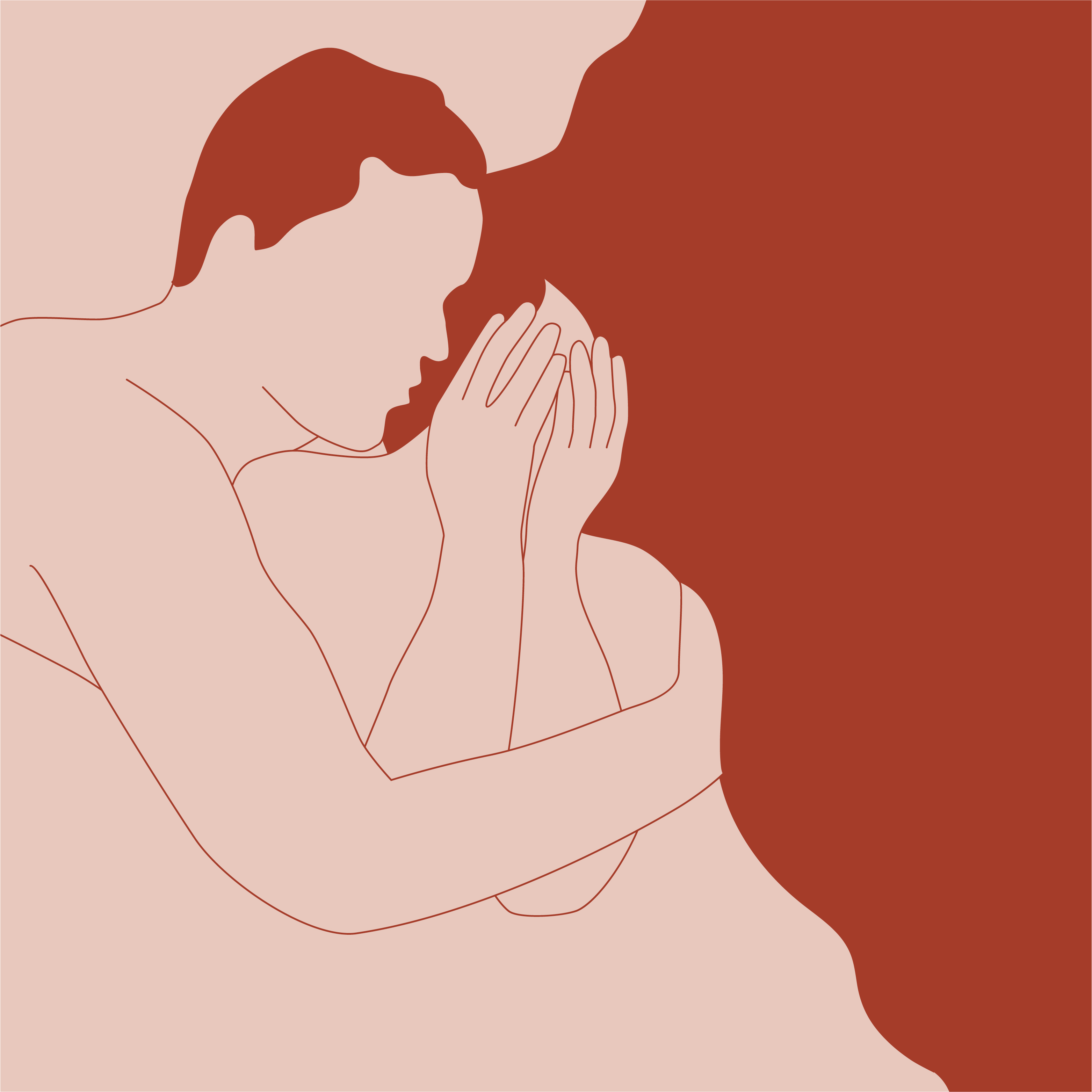Apr 14, 2022
HOW TO EXERCISE WITH YOUR MENSTRUAL CYCLE
Annamo founder Hannah Moloney started tracking how she felt while exercising, at different stages of her cycle, when her otherwise healthy body suddenly became overwhelmed by fatigue. She had always been passionate about exercise. Throughout highschool she played sports and athletics and eventually found herself in the gym so much that she decided to start her own personal training business, on the Mornington Peninsula where she was living at the time.
Running became Hannah’s favourite form of exercise, and she loved competing in marathons. Sadly, after that, it wasn’t long until her body started to rebel, leaving her overwhelmed by fatigue and with no solid reason why. Seeking answers, Hannah stopped everything and threw herself into research, and for the first time in her life she became aware of her menstrual cycle.
‘When I was at my absolute lowest my naturopath mentioned my menstrual cycle to me’, Hannah shared. ‘She told me to reel [my exercise] in entirely, and really focus on how my body was feeling. So I started to educate myself by tracking my cycle and the different movements I was meant to be doing when my hormones were at different peaks and lows.’
What Hannah discovered completely changed her life. She spent about a year without running, before she was well enough to slowly start introducing it back in. Through tracking her symptoms and workouts with her cycle, she noticed a significant correlation between what she could and couldn’t do physically, depending on where her hormones were at at the time. Her body had been telling her what it needed all along, and now she had the tools to listen.
‘The biggest thing with any exercise is noticing how you feel afterwards, Hannah continued. ‘Of course you’re always going to feel somewhat crap, but actually thinking about how you feel beyond that, right after you do something, is so important. It’s also crucial to do your own research… I did so much reading and brought that back to how my own body responded to things. It teaches you so much.’
Now Hannah is happily settled in Sydney, ‘the exercise capital of the world’, and she works as an instructor at a number of local studios. She started her online exercise platform Annamo during lockdown, just after she moved cities, when all of the fitness studios had closed. Annamo is a membership based library of workouts, categorised by the different phases of the menstrual cycle, and also a place where Hannah shares interesting blogs and relevant information.
Hannah outlined the different stages of the menstrual cycle and the corresponding best types of exercises:
The Phases of the Menstrual Cycle
‘The four phases of the menstrual cycle are: menstruation, the follicular phase, ovulation and the luteal phase’.
MENSTRUATION
‘Heading into your menstruation your hormones will be at their lowest. You might wake up for your Pilates class and think: I can not be bothered or go into a class and feel like it’s dragging. That’s when you know your hormones are lower and that your body might not be feeling it as much.’ — Do Yoga, Pilates, walks and stretching during this time, ‘nothing that is going to get your heart rate up.’
THE FOLLICULAR PHASE
‘During the Follicular phase, we’re looking at a little bit more strength: because your hormones are increasing – but not peaking. Pilates with more of a strength focus and light weights will be really good here.’
OVULATION
‘During Ovulation is when you’ll be feeling quite fabulous. Estrogen peaks, so this is when you can do higher-resistance gym sessions, HIIT, Circuit training or go for a longer distance run, and you’ll feel good doing it. Everyone is different though, so still pay attention to what works for you.’
PRE AND POST LUTEAL PHASE
‘The Luteal phase is broken down into two phases, because your hormones adapt so much in that time. With your pre-Luteal you’d be looking at still doing that high-intensity training, like a really big run or high intensity classes. Then in your post-Luteal, coming into your period, your hormones will start to drop and you’ll start experiencing PMS symptoms. It’s best to come back to that lower intensity movement like yoga, light pilates and walks in that phase.’
Hannah’s strong advice for learning more about your own cycle and response to movement is to ‘pay attention to feelings of frustration as well as your energy levels’.
‘Lack of energy and frustration is a really big one. You get people who will be running one week and go out and do their best time, feeling the lightest on their toes. And then the next week, they try to do the exact same thing and totally struggle; short of breath. At the end of the day it’s ok to still do the exercise you want to do, but try to adapt the intensity for where you’re at in your cycle. It’s just about understanding that and adapting your sessions so that you’re supporting your hormones, and working your body.’
Educational Resources
Hannah’s recommended educational resources are:[1]
TRACKING APPS
- MyFlo: great education about hormones, food and movement through the different phases.
- Flo: simple tracking app
BOOKS
- The Women Code, Alisa Vitti
- In The Flo, Alisa Vitti
- Period Power, Maisie Hill
- Period Repair Manual, Lara Briden
PODCASTS
- Talking Periods with Lauren Curtain, The WOW, 18th Aug 2020
- Eating, Exercise and Your Period with Sarah Liz King, The WOW, 10 Nov 2020
- The Well Women Podcast: All podcasts! Jema Lee talks in depth about periods, PCOS, PMS, Endometriosis, the list goes on.
INSTAGRAM ACCOUNTS
Browse workouts at Annamo or follow Hannah on Instagram here.
[1] My recommendations to educate yourself, Annamo Blog, https://www.annamo.com.au/blog/my-recommendations-to-educate-yourself-more
Blogs

Jun 08, 2022
EXPLORING PERIOD CARE IN CULTURES AROUND THE WORLD
Our TOM Talks panelist Sabina McKenna explores how different cultures around the world approach period care.
Read More
Jun 08, 2022
STOP APOLOGISING FOR HAVING YOUR PERIOD
Our TOM Talks panelist Mel Mason talks about the importance of not apologising for having your period.
Read More
Jun 07, 2022
STRESSED? NOT SLEEPING? TRYING TO CONCEIVE?
TOM Talk's panelist Georgia Hartmann discussed the links between stress, sleep and fertility.
Read More
Jun 07, 2022
STRESS AND HOW IT AFFECTS YOUR SEX DRIVE
Certified sex coach Georgia Grace is here to unpack the link between stress and sex.
Read More